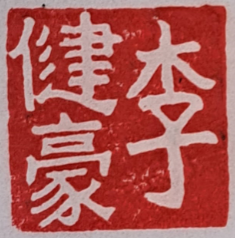Keefe’s description of East Broadway in The Snakehead is meant to add some journalistic flavour to an account of what is really a transnational network of human smuggling, rather than the city per se. Published in 2009, his book disentangles the ‘snakehead’ networks who brought thousands from Fuzhou to America. All books need their antagonists and protagonists: here, Sister Ping plays this role, a woman who amassed a fortune of US$40 mil as a Robin Hood-like figure, transporting desperate, ambitious migrants for US$18,000 through routes that spanned Central America, Kenya, Burma, Thailand and Hong Kong. The drama of the Golden Venture, a cargo ship carrying 286 migrants, deliberately run aground on the Rockaways with ten people drowning in the aftermath, bookends the narrative. Nonetheless, when we move from these dizzying transnational heights and ground this as an “epic tale of the Chinatown Underworld” (as the book is subtitled) Chinatown’s spaces appear to represent a tumultuous kind of freedom.
In an earlier phase of operations, snakeheads would house new arrivals in Manhattan in apartments – in Ping’s case, one located in Market Street – for a day or two, before calling up relatives to demand the fee owed for a successful crossing of borders. “Technically they’re indenturing themselves to be servants for the rest of their lives”, a Coast Guard Petty Officer Scott Miles moralizes in the aftermath of the Golden Venture incident; Keefe instead stresses that “familial and communal ties among the Chinese in America were so strong that a new arrival could count on a guarantor cobbling together a five-figure fee by borrowing small amounts from many people—$1,000 here, $500 there. The immigrant was thus indentured not so much to the snakehead as to his own family.”1 Keefe’s other sketches of Chinatown’s geography point to the brief revival of triad warfare, this time from emergent Fujianese gangs centred around Eldridge Street, while Ping’s family owns till this day a restaurant at 47 East Broadway, lobsters and fish still swimming among cloudy tanks separating the street from an interior of karaoke-singing businessmen when I walked past in April.
‘Tragic Case of the Golden Venture’ (US Coast Guard, 1996).2
Yet, the path to a life in America – be it in Manhattan’s Chinatown or elsewhere – survivors of the Golden Venture spent nearly four years incarcerated, notably 38 in York County Prison in Pennsylvania where they would gain attention as artists and sculptors from behind bars before eventually being freed and given a limited route to naturalization. Their treatment, callous for many contemporaries and mobilizing weekly vigils amongst sympathetic locals, seems remarkably mild in today’s political climate. I tried to see what was left of the 16,000 sculptures (“ paper bowls, vases, birds, and a menagerie of other creatures” formed out of papier-mache from newspapers, legal pads, and hand-me-down magazines at the Museum of Chinese in America, only to be informed by the staff that much of their physical archives were still being conserved and restored after a fire caused significant water damage to their collections.
Today, far fewer inhabitants of Chinatown would be troubled by MOCA’s woes. For years, an extremely controversial jail has been proposed for development in Chinatown, a 300-foot-tall detention center passed down from the mayorships of De Blasio to Adams, reviving plans from the 1980s to establish carceral facilities downtown. It is not just irony or a little echo of history that MOCA has gotten involved; it has accepted the city’s grant money for cultural centers, and in so doing, acquired a complicity where US$39 mil earmarked for heritage needs now actively threatens the very neighbourhood it stands in, directed towards paying off a mortgage of more than US$50 mil for a shiny new building.3 Call it a bribe – reporters, or the bookseller at the Storefront for Art and Architecture where I first heard about MOCA, certainly all do – or the price of doing business, but evidently a jail for Chinatown signify very different things. Archives and museums themselves also participate in the remaking of the urban and social fabric that they try to weave.
- Keefe, The Snakehead, Ch.3. ↩︎
- Tragic Case of the Golden Venture, 1996, excerpt from the syndicated broadcast Coast Guard. https://www.youtube.com/watch?v=Peglf09BOmk. ↩︎
- Nehme, Adrianna, and Michaela Seah. “Demonstrators Boycott Chinatown Museum to Protest New Mega Jail.” Washington Square News (blog), October 4, 2022. https://nyunews.com/news/2022/10/04/chinatown-protest-against-jail-construction/; Liu, Nicholas. “At Chinatown Museum’s Lunar New Yr Party, Protesters Accuse Its Leadership of Selling Out.” Our Town, February 24, 2024. https://www.otdowntown.com/news/at-chinatown-museum-s-lunar-new-yr-party-protesters-accuse-its-leadership-of-selling-out-BG3181571. ↩︎

Leave a Reply